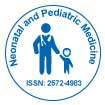School-aged children with central obesity have an increased risk for developing autoimmune diseases during adolescence
*Corresponding Author:
Copyright: © 2021 . This is an open-access article distributed under the terms of the Creative Commons Attribution License, which permits unrestricted use, distribution, and reproduction in any medium, provided the original author and source are credited.
Abstract
The incidences of autoimmune diseases have been increasing without clear explanations. This study aims to determine whether central obesity, excess weight, and particular dietary patterns in school-aged children are risk factors for autoimmune diseases during adolescence. In this matched case-control study of 525 children, who were followed up from a median age of 11.3 to 16.7 years, primary autoimmune diagnoses (type 1 diabetes, autoimmune thyroiditis, juvenile idiopathic arthritis, and inflammatory bowel disease) were obtained from national registers. Of them, 105 children received autoimmune diagnoses after baseline recruitment and generated the case group. For each of them, four children with matching age, sex, and residential area generated the control group of 420 children. At baseline, age- and sex-specific body mass index categories were acquired and waist-to-height ratio (WHTR) was calculated. Central obesity was present when WHTR≥0.5. Dietary patterns including meal patterns, eating habit, and sugary product and fruit/vegetable consumption frequencies were analyzed using a food frequency questionnaire. The association between these variables and the development of autoimmune diagnoses were analyzed. School-aged children with central obesity were 2.11 (95% confidence interval [CI] 1.11-3.98) times more likely to develop autoimmune diseases during adolescence than those without central obesity. In contrast, being overweight was not related to the onset of these diseases (odds ratio 1.60, 95% CI 0.89-2.87). Dietary patterns were also not confirmed as risk factors in this prospective study.

 Spanish
Spanish  Chinese
Chinese  Russian
Russian  German
German  French
French  Japanese
Japanese  Portuguese
Portuguese  Hindi
Hindi 